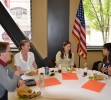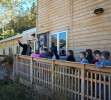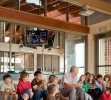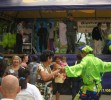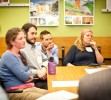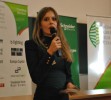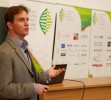The Ambassador Network Shapes the Built Environment
The International Living Future Institute launches the Ambassador Network to advance its cause of reconciling the relationship between the natural and built environments.
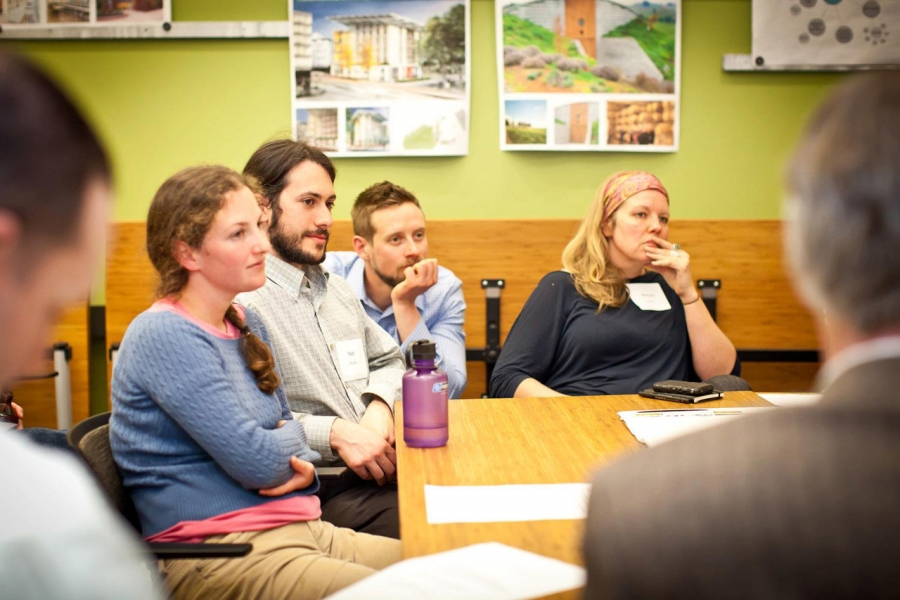 The Living Building Challenge Collaborative in Portland, Oregon holds its first meeting.
© 2012 Catchfly Photography, LLC
The Living Building Challenge Collaborative in Portland, Oregon holds its first meeting.
© 2012 Catchfly Photography, LLC
The federal government gave the Living Building Challenge a vote of confidence last May when it shortlisted the Challenge, along with LEED 2009 and Green Globes, in the General Services Administration’s (GSA) Initial Report on Green Building Certification Systems. According to the report, the GSA “narrowed the field by selecting systems that employed whole-building evaluations, are available within the U.S. market, and have third-party certifications.” Under the Energy Independence and Security Act, the GSA is required to review building certification programs every five years, and this review cycle comes at a time when the U.S. Green Building Council (USGBC) has been forced to delay the release of its latest version of LEED (formerly known as LEED 2012, now simply called LEED Version 4), due to an unprecedented number of public comments and challenges from various interest groups.
As LEED Version 4 undergoes yet another round of public comments in its efforts to keep the green movement marching forward, other players in the green building arena are making their own efforts to push ahead, and that includes the Living Building Challenge, which is already considered to be the world’s most advanced green building certification program. Introduced in 2006 by The Cascadia Green Building Council (a chapter of the USGBC that represents a region extending along the western seaboard from Oregon to Alaska and as far east as Montana), oversight of the Living Building Challenge was transferred in 2009 to a newly established non-profit organization, the International Living Building Institute, which was later renamed the International Living Future Institute (ILFI).
ILFI Takes the Long View

Whereas LEED has focused on incremental change and tangible, measurable steps that the USGBC hopes will eventually result in large-scale sustainability achievements, the ILFI keeps its eye on the end goal. In its own words, it is “in pursuit of a future that is socially just, culturally rich, and ecologically restorative.” The ILFI recognizes that the enormity of this goal requires engagement and commitment from the entire world community. While the Living Building Challenge has had a considerable impact upon building practices across North America and a handful of certified projects scattered around the globe, the program now must take things to the next level.
Achieving Living Building Status (i.e., full certification) is difficult, since all 20 Imperatives (subcategories of the program’s seven key performance areas, or petals) must not only be addressed but prove their performance for a full 12 months of building operation. Among the Living Building Challenge’s petals are “Equity” and “Beauty,” categories that defy easy definition. Even in the more familiar territory of water and energy usage, the LIving Building Challenge’s stringent net-zero requirements mean that local conditions, ranging from climate to building codes, can make or break a building’s ability to achieve certification. Therefore, in an effort to spread a more complete understanding of the program and its message, the ILFI has implemented an Ambassador Network, or “global community” of volunteer ambassadors.
Spreading the Word
Ambassadors receive training (via webinar) to cement their own understanding of the Living Building Challenge. They then receive educational materials from the ILFI and can serve as volunteer presenters in their own geographic region, familiarizing a wide range of audiences with the Living Building Challenge’s principles. Ambassadors can also form a local Living Building Challenge Collaborative in order to learn from each other and develop support within their community.
Jeff Stanton, Sustainability Director for SmithGroupJJR’s Phoenix office, became an Ambassador in January 2012. Says Stanton:
"SmithGroupJJR has always had sustainability as a core value. We’ve been involved with LEED for a while, as well as serving on task forces and committees. The question now is how to maximize green opportunities…. With the Living Building Challenge building steam and becoming more popular, we have been looking at it more seriously as a firm. SmithGroupJJR has a Living Building going up in Washington, D.C. [the Chesapeake Bay Foundation]."

SmithGroupJJR made a firmwide effort to send attendees to the summit of 45 Ambassadors who got together this Spring in Portland as part of the annual Living Future unConference. Now Stanton and other SmithGroupJJR Ambassadors are focusing on getting the word out and educating their communities. Stanton himself has had many opportunities to speak at events in the Phoenix area. To take the conversation to a higher level, he is talking with some of the local colleges about the possibility of starting a Collaborative.
Jim Nicolow, Principal and Director of Sustainability at Lord, Aeck & Sargent Architecture, is an Ambassador representative for the firm’s Ann Arbor, Atlanta, Austin, and Chapel Hill offices. Nicolow reports that his involvement in the Ambassador Network has combined “in-house consulting and education regarding the LBC program for a couple of current projects and several recent pursuits,” as well as speaking engagements for a national conference and a local sustainability gathering.
Working Together to Find Solutions
One of the benefits to talking about Living Building implementation at a local level is that the conversation can hone in on local conditions. “For example,” says Stanton, “in Phoenix, water is always an issue. So we look at some of the options, such as treating blackwater.… The ILFI has come up with building prototypes for varying climates, but local groups can push the discussions further.”
Many Collaboratives use their meeting time to discuss their particular set of challenges, whether legal, financial, or climatic. The Collaborative in the San Francisco Bay area formed, according to a statement on the ILFI website, to “build a Bay Area community of practitioners who would collectively share knowledge and potentially incubate more Living Building Challenge projects in our area.” After more than two years together, colleagues in the Bay area building industry have had the opportunity to examine many of the region’s most progressive projects, ones that demonstrate cutting-edge concepts and solutions.
Doing by Learning
For a certification program with requirements as stringent as the Living Building Challenge’s, a tremendous amount of collective knowledge must be gained in order for the program’s vision to become a reality. As Nicolow says of the Ambassador effort, “The key benefit has been to quickly grow a network of professionals who are more directly engaged with ILFI and have a deeper understanding of the LBC; you have to understand something well in order to teach it, and nothing encourages preparation and research like having to present something to an audience."
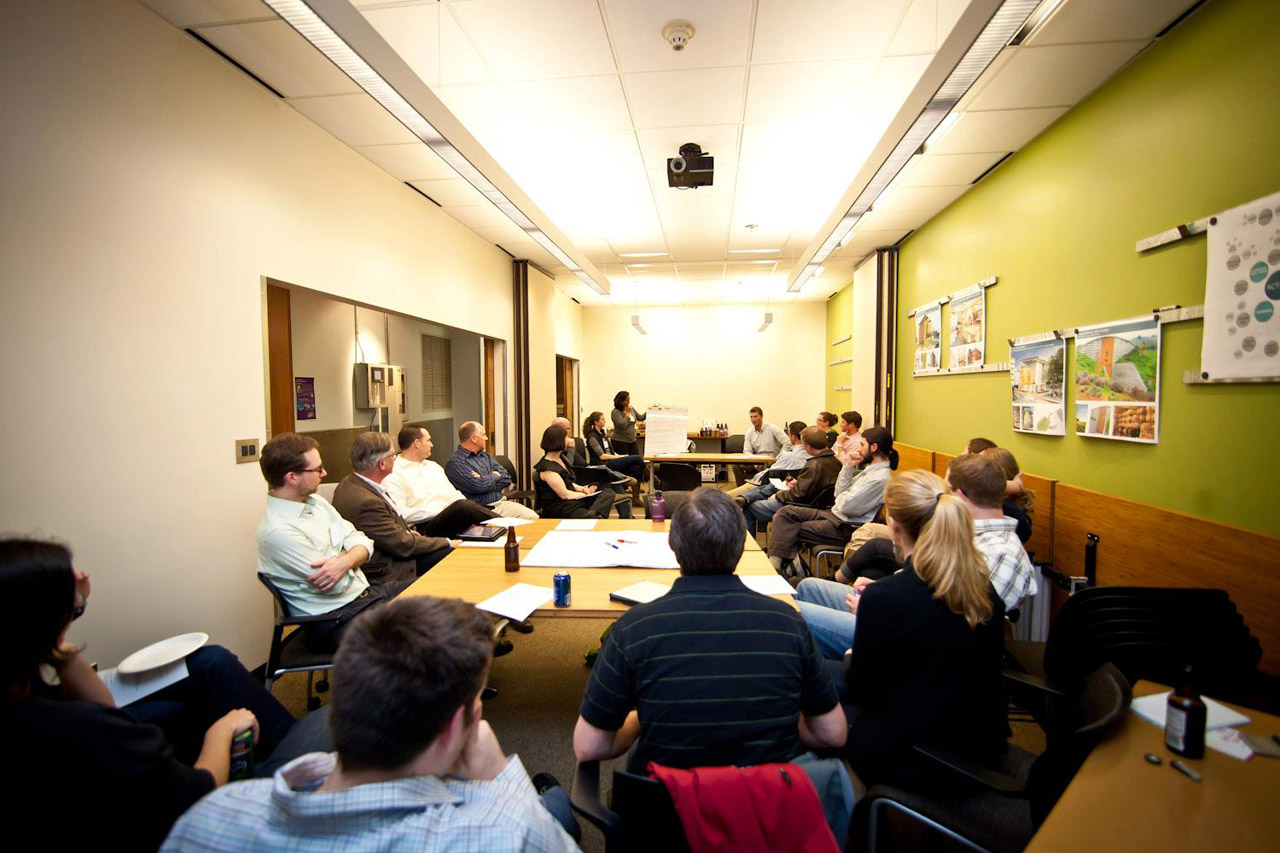

Kristin Dispenza
Kristin graduated from The Ohio State University in 1988 with a B.S. in architecture and a minor in English literature. Afterward, she moved to Seattle, Washington, and began to work as a freelance design journalist, having regular assignments with Seattle’s Daily Journal of Commerce.
After returning to Ohio in 1995, her freelance activities expanded to include writing for trade publications and websites, as well as other forms of electronic media. In 2011, Kristin became the managing editor for Buildipedia.com.
Kristin has been a features writer for Buildipedia.com since January 2010. Some of her articles include:

